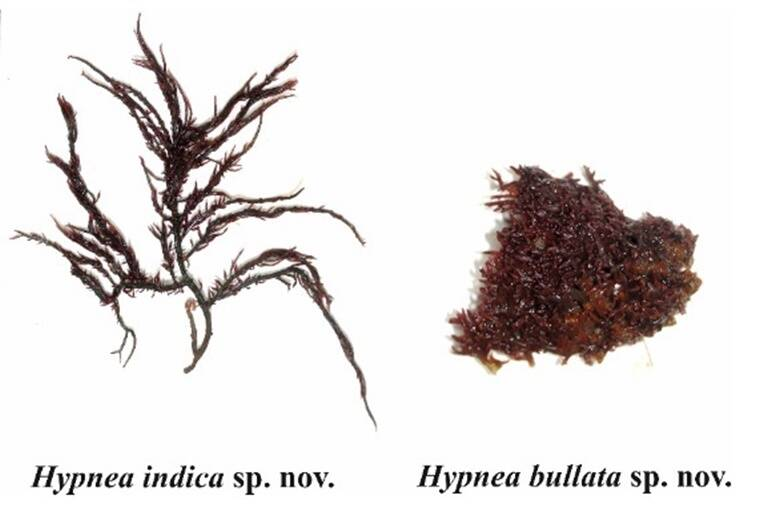New Red Algal Seaweed Species | 30 Mar 2021
Why in News
Recently, two new red algal seaweed species have been discovered along India’s coastline.
- India has a vast coastline of over 7,500 kms.
Key Points
- About:
- They grow in the intertidal regions of the coast, namely the area that is submerged during the high tide and exposed during low tides.
- The genus Hypnea consists of calcareous, erect, branched red seaweeds.
- There are 61 species of which 10 were reported in India. With two new species, the total number of species now would be 63.
- Location:
- Hypnea indica was discovered in Kanyakumari in Tamil Nadu, and Somnath Pathan and Sivrajpur in Gujarat.
- Hypnea bullata was discovered from Kanyakumari and Diu island of Daman and Diu.
- Significance:
- Hypnea variants of seaweeds can fetch good monetary value if commercial-scale cultivation is taken up. Hypnea contains Carrageenan, a biomolecule commonly used in the food industry.
Seaweeds
- About:
- They are the primitive, marine non-flowering marine algae without root, stem and leaves, play a major role in marine ecosystems.
- Large seaweeds form dense underwater forests known as kelp forests, which act as underwater nurseries for fish, snails and sea urchins.
- Some species of seaweeds viz. Gelidiella acerosa, Gracilaria edulis, Gracilaria crassa, Gracilaria verrucosa, Sargassum spp. and Turbinaria spp.
- Location:
- Seaweeds, found mostly in the intertidal region, in shallow and deep waters of the sea and also in estuaries and backwaters.
- The southern Gulf of Mannar’s rocky intertidal and lower intertidal regions have rich populations of several seaweed species.
- Ecological Importance:
- Bioindicator:
- When waste from agriculture, industries, aquaculture and households are let into the ocean, it causes nutrient imbalance leading to algal blooming, the sign of marine chemical damage. Seaweeds absorb the excess nutrients and balance out the ecosystem.
- Iron Sequestrator:
- These aquatic organisms heavily rely on iron for photosynthesis. When the quantity of this mineral exceeds healthy levels and becomes dangerous to marine life, seaweeds trap it and prevent damage. Similarly, most heavy metals found in marine ecosystems are trapped and removed by seaweeds.
- Oxygen and Nutrient Supplier:
- On their part, the seaweeds derive nutrition through photosynthesis of sunlight and nutrients present in seawater. They release oxygen through every part of their bodies. They also supply organic nutrients to other marine life forms.
- Bioindicator:
- Role in Climate Mitigation:
- Seaweed has a significant role in mitigating climate change. By afforesting 9% of the ocean with seaweed, it is possible to sequester 53 billion tons of carbon dioxide annually. Hence, there is a proposal termed as ‘ocean afforestation’ for farming seaweed to remove carbon.
- Other Utilities:
- They can be used as fertilizers and to increase aquaculture production.
- When livestock is fed with seaweed, methane emission from cattle may be reduced substantially.
- They can be buried in beach dunes to combat beach erosion.
- It is used as an ingredient in preparing toothpaste, cosmetics and paints.
- Related Initiative:
- Recently, the Technology Information, Forecasting and Assessment Council (TIFAC) has launched a Seaweed Mission.

